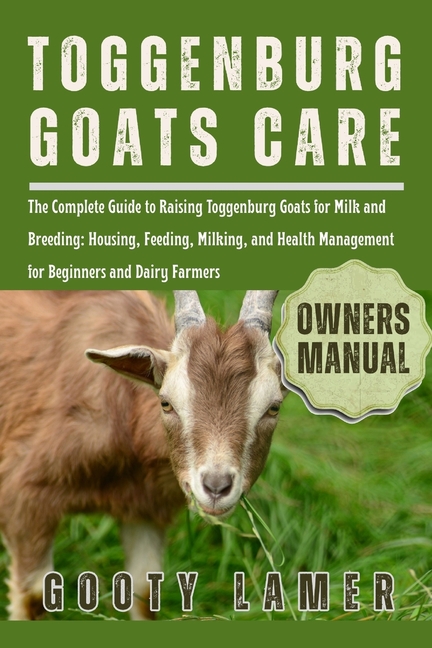Description
The Toggenburg goat is one of the oldest and most distinguished dairy goat breeds in the world. With its roots deeply embedded in the Toggenburg Valley of northeastern Switzerland, this breed boasts a lineage that dates back hundreds of years. The rugged alpine environment shaped these goats into resilient, hardworking, and productive animals-traits that continue to define the breed today.
The name "Toggenburg" comes directly from the valley where these goats were first bred. Nestled in the canton of St. Gallen, this picturesque region of Switzerland provided the ideal terrain for a breed that would become known for its endurance, consistent milk production, and gentle temperament. Early farmers in the Toggenburg Valley selectively bred goats that could withstand the harsh mountain winters, climb steep pastures, and still produce high-quality milk.
Unlike many other breeds that have been modified or hybridized over time, Toggenburg goats have retained much of their original genetic makeup. This continuity makes them a vital part of both historical agriculture and modern dairy operations. As one of the first goat breeds to be officially registered in a herd book-in the 1890s in Switzerland and soon after in other countries-Toggenburgs have set a high standard for dairy goats across the globe.
Spread Beyond Switzerland
The popularity of the Toggenburg goat quickly expanded beyond the Swiss borders. By the late 19th and early 20th centuries, breeders in the United Kingdom, the United States, Australia, and other parts of Europe began importing Toggenburgs to improve local dairy herds.
In the United Kingdom, the British Toggenburg was developed by crossing imported Toggenburgs with native British goats to enhance milk production and hardiness. Similarly, the United States saw its first Toggenburgs arrive in the early 1900s, and the breed became one of the foundation breeds registered with the American Dairy Goat Association (ADGA). The breed's excellent milking ability and appealing temperament made it a favorite among homesteaders and small farmers alike.
Interestingly, in some areas, Toggenburgs were also crossbred with Nubians and other goats to create hybrids that retained milk production qualities while improving butterfat content or adapting to local climates. Despite these variations, the purebred Toggenburg continues to be highly valued for its consistency, predictability, and docile personality.
Physical Characteristics and Appearance
The Toggenburg goat is immediately recognizable due to its distinct coloration and markings. These goats have a medium-sized, well-proportioned body with straight facial profiles and alert, intelligent expressions. The breed standard, particularly as defined by the ADGA and other major goat registries, outlines the following key features:
1. Color: The coat ranges from light fawn to deep chocolate brown. What makes them truly unique is the presence of white or cream markings that accent their face and legs. These markings typically include:
The name "Toggenburg" comes directly from the valley where these goats were first bred. Nestled in the canton of St. Gallen, this picturesque region of Switzerland provided the ideal terrain for a breed that would become known for its endurance, consistent milk production, and gentle temperament. Early farmers in the Toggenburg Valley selectively bred goats that could withstand the harsh mountain winters, climb steep pastures, and still produce high-quality milk.
Unlike many other breeds that have been modified or hybridized over time, Toggenburg goats have retained much of their original genetic makeup. This continuity makes them a vital part of both historical agriculture and modern dairy operations. As one of the first goat breeds to be officially registered in a herd book-in the 1890s in Switzerland and soon after in other countries-Toggenburgs have set a high standard for dairy goats across the globe.
Spread Beyond Switzerland
The popularity of the Toggenburg goat quickly expanded beyond the Swiss borders. By the late 19th and early 20th centuries, breeders in the United Kingdom, the United States, Australia, and other parts of Europe began importing Toggenburgs to improve local dairy herds.
In the United Kingdom, the British Toggenburg was developed by crossing imported Toggenburgs with native British goats to enhance milk production and hardiness. Similarly, the United States saw its first Toggenburgs arrive in the early 1900s, and the breed became one of the foundation breeds registered with the American Dairy Goat Association (ADGA). The breed's excellent milking ability and appealing temperament made it a favorite among homesteaders and small farmers alike.
Interestingly, in some areas, Toggenburgs were also crossbred with Nubians and other goats to create hybrids that retained milk production qualities while improving butterfat content or adapting to local climates. Despite these variations, the purebred Toggenburg continues to be highly valued for its consistency, predictability, and docile personality.
Physical Characteristics and Appearance
The Toggenburg goat is immediately recognizable due to its distinct coloration and markings. These goats have a medium-sized, well-proportioned body with straight facial profiles and alert, intelligent expressions. The breed standard, particularly as defined by the ADGA and other major goat registries, outlines the following key features:
1. Color: The coat ranges from light fawn to deep chocolate brown. What makes them truly unique is the presence of white or cream markings that accent their face and legs. These markings typically include:
a. White ears with a dark spot in the middle
b. Two white stripes down the face from above the eyes to the muzzle
c. White legs below the knees and hocks
d. A white triangle on either side of the tail
2. Coat: Toggenburgs usually have short to medium-length hair, although some strains, particularly in colder climates, may exhibit longer hair along the back and thighs during winter months. Their coats are sleek and smooth, requiring minimal grooming compared to long-haired breeds.
3. Size and Weight: Mature does (females) typically weigh between 120 to 150 pounds, while bucks (males) can weigh 150 to 200 pounds. They are medium-sized goats, not as large as Saanens or Alpines but more robust than Nigerian Dwarf or Pygmy goats.
Last updated on
Product Details
- Jul 2, 2025 Pub Date:
- 9798290590097 ISBN-10:
- 9798290590097 ISBN-13:
- English Language




